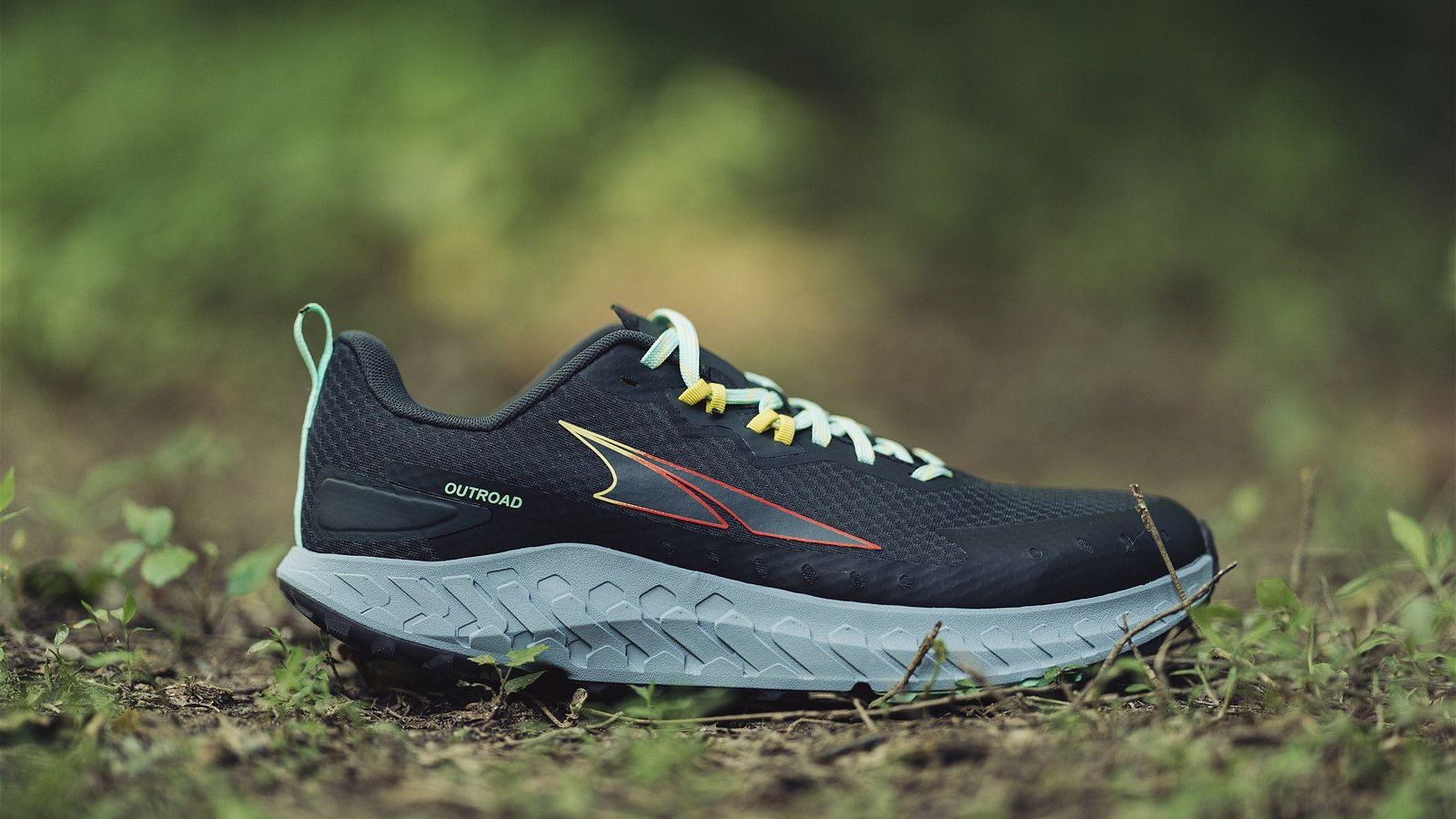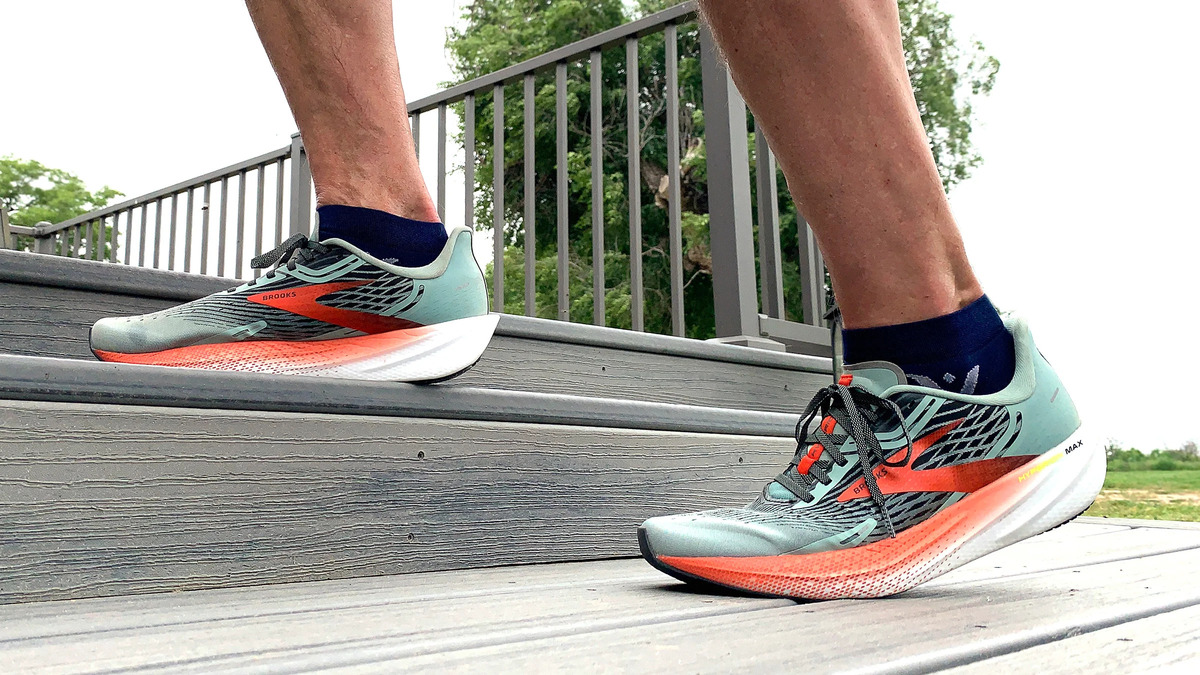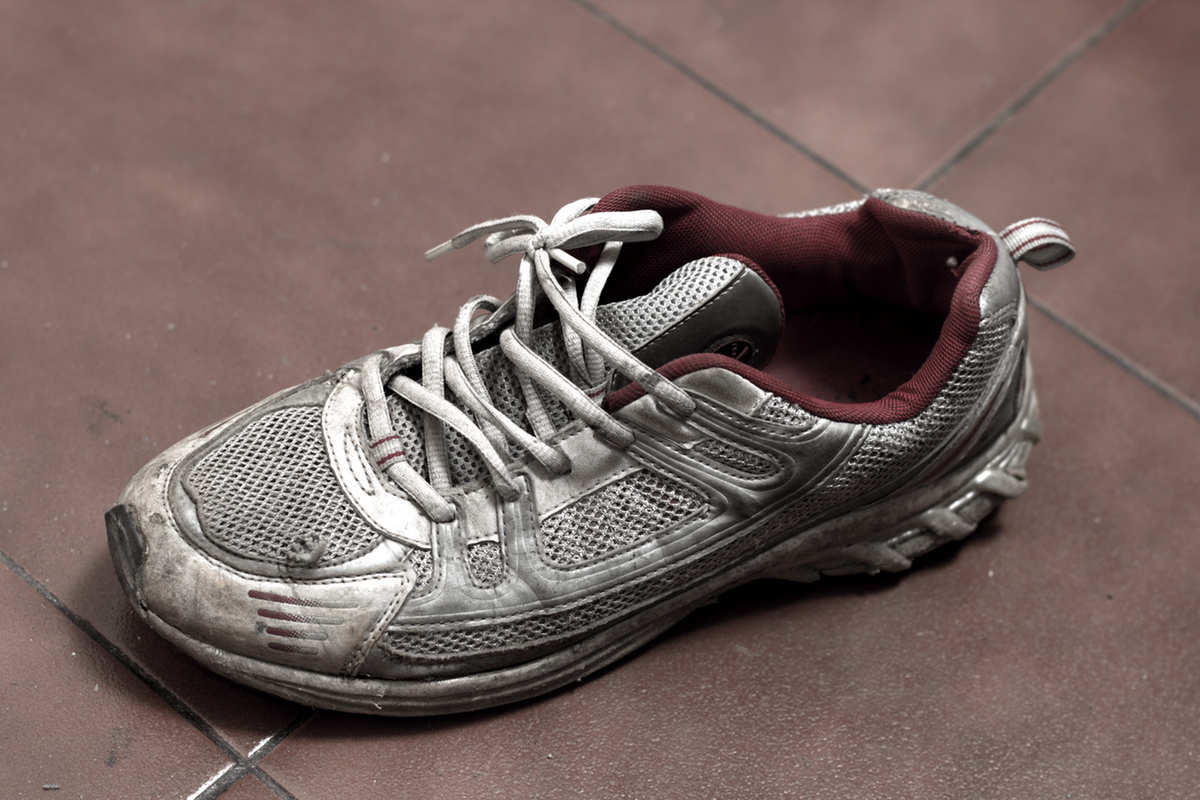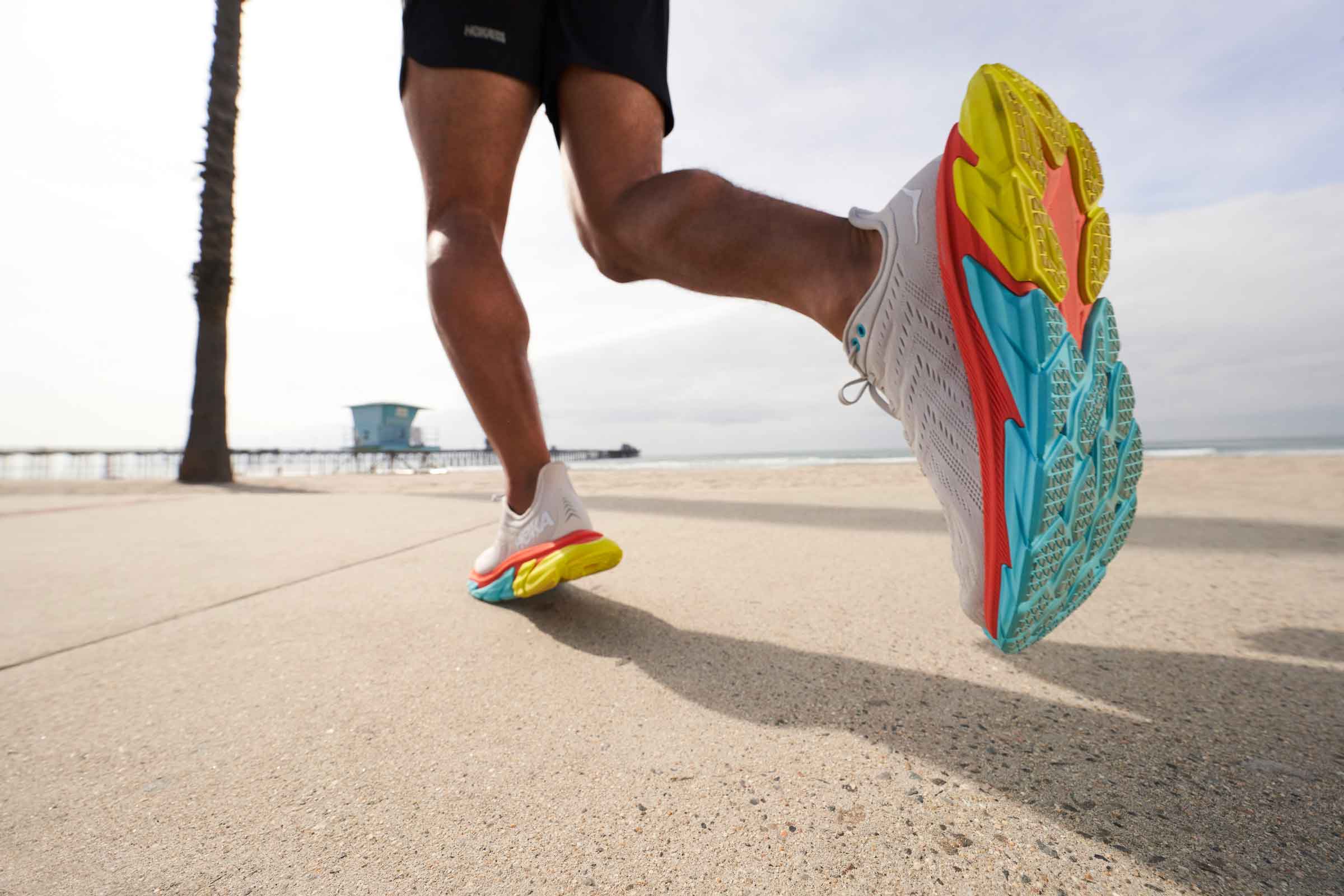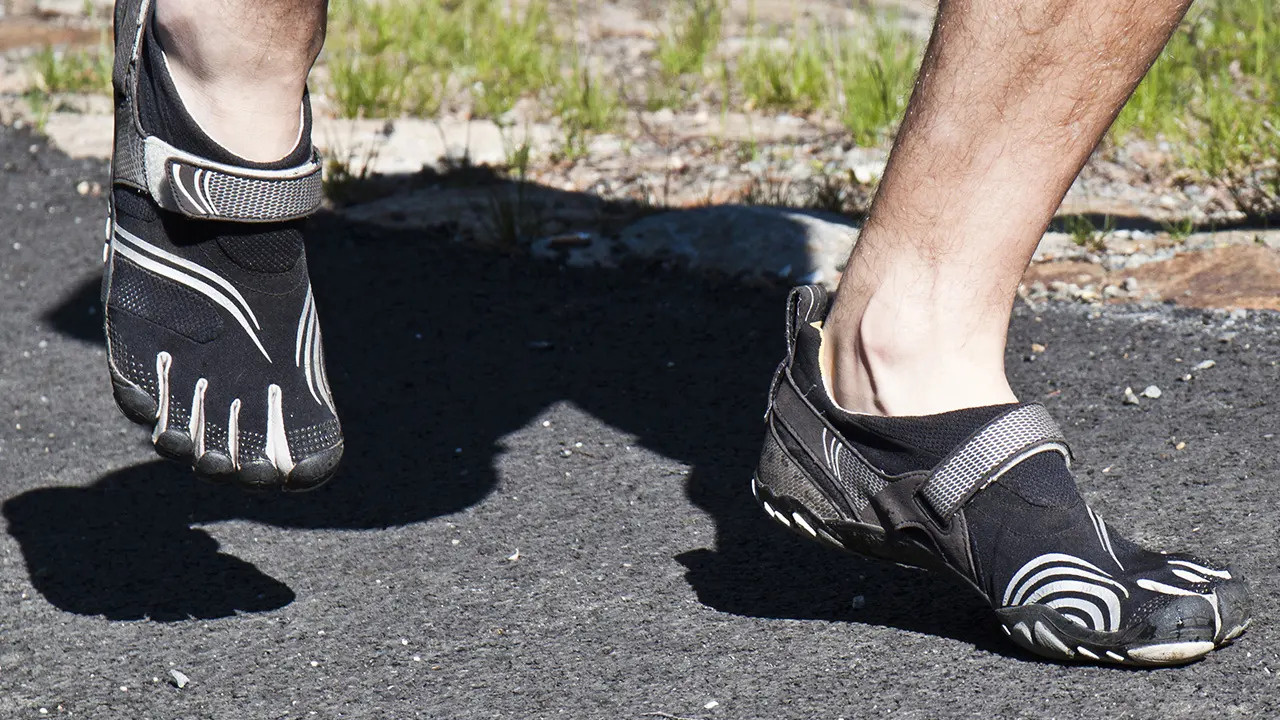Home>Misc>Featured>How Many Miles To Break In New Running Shoes


Featured
How Many Miles To Break In New Running Shoes
Modified: May 22, 2024
Find out how many miles it takes to properly break in your new running shoes. Featured tips and advice for getting the most out of your footwear.
Introduction
Breaking in a new pair of running shoes is a topic that often sparks debate among runners. Some believe that it is necessary to put in a certain number of miles to properly break in the shoes and optimize their performance, while others argue that modern shoe technology has eliminated the need for a break-in period. Whether you are a seasoned runner or just starting out, understanding the concept of shoe break-in can help you make informed decisions about your footwear.
Shoe break-in refers to the process of allowing the shoes to adapt to your feet and for your feet to adjust to the shoes. New shoes often feel stiff and uncomfortable, and breaking them in can help improve their fit and flexibility. This process is especially important for running shoes, as they need to provide the necessary support and cushioning to help prevent injuries and enhance your performance.
For many years, it was commonly believed that running shoes needed to be broken in to achieve optimal fit and comfort. This belief was based on the idea that the materials used in the shoes, such as the midsole, outsole, and upper, needed time to soften and mold to the shape of the foot. However, advancements in shoe manufacturing technology have led to the development of shoes that are designed to be comfortable straight out of the box.
While it is true that modern running shoes are often more comfortable and require less break-in time than older models, there are still certain factors that can affect the break-in process. The type of shoe, the materials used, and your individual foot shape and running style can all play a role in how quickly your shoes break in.
In this article, we will explore the factors that affect shoe break-in, discuss how many miles it takes to break in new running shoes, and provide tips to help you break in your new shoes effectively.
What is shoe break-in?
Shoe break-in is the process of wearing and using new shoes until they conform to the shape of your feet and become more comfortable. When you first purchase a pair of running shoes, they often feel stiff, tight, and even slightly uncomfortable. This is because the materials used in the shoes, such as the midsole and upper, need time to soften and adjust to the contours of your feet.
During the break-in period, the shoes will gradually mold to the shape of your feet, providing a better fit and increased comfort. This process is especially important for running shoes, as a proper fit is crucial for optimal performance and injury prevention. A well-fitted running shoe will provide the right amount of support, cushioning, and stability for your feet and running style.
Shoe break-in can vary depending on several factors, including the type of shoe, the materials used, and your individual foot characteristics. Some shoes may require only a few runs to break in, while others may take longer. It’s important to note that not all shoes require a lengthy break-in period. Advances in shoe technology have led to the development of running shoes that are designed to be comfortable right out of the box.
However, even with these advancements, it is still common for new shoes to have a break-in period to some extent. This is because each person’s feet are unique, and it takes time for the shoes to adapt to the individual contours and movements of their feet. Additionally, some materials used in shoes, such as foam midsoles, may need some time to compress and provide optimal cushioning.
It’s important to pay attention to how your shoes feel during the break-in period. While some slight discomfort or tightness is to be expected, you should not experience intense pain or discomfort that persists throughout your runs. If you do, it may be a sign that the shoes are not the right fit for your feet.
In the next sections, we will explore the factors that can affect shoe break-in and discuss how many miles it generally takes to break in new running shoes.
Do running shoes really need to be broken in?
The debate on whether running shoes need to be broken in is a common one among runners. Some argue that modern shoe technology has eliminated the need for a break-in period, while others believe that wearing new shoes without any break-in can lead to discomfort and potential injuries. So, do running shoes really need to be broken in?
The answer is not a simple yes or no. It depends on various factors, including the type of shoe, the materials used, and individual preferences. Advances in shoe manufacturing have led to the production of running shoes that are designed to be comfortable right out of the box. These shoes often feature softer and more flexible materials, as well as cushioning technologies that provide immediate comfort.
However, even with these advancements, some runners may still prefer to break in their shoes to ensure the perfect fit and adjustability. Breaking in shoes can allow the materials to conform to the unique shape of your feet and help alleviate any potential pressure points or discomfort. It can also give you time to assess how the shoes perform during your runs and make any necessary adjustments.
Another reason why runners may choose to break in their shoes is to allow their feet to adjust to the new footwear. If you have been using a specific shoe model for a long time and switch to a new one, your feet may need time to adapt to the different design and biomechanics. Gradually wearing the new shoes can help your feet acclimate to the changes and mitigate the risk of injury.
Ultimately, the decision to break in running shoes is a personal one. If you find that new shoes feel comfortable and perform well without any break-in period, there’s no need to force it. On the other hand, if you prefer a more customized and adjusted fit, taking the time to break in your shoes can be beneficial.
Regardless of whether you choose to break in your running shoes or not, it’s crucial to listen to your body and pay attention to any discomfort or pain during your runs. If you experience persistent pain or discomfort, it may be a sign that the shoes are not the right fit for your feet or running style. In such cases, it’s advisable to consult with a professional shoe fitter or podiatrist to find the best shoe for your needs.
In the next section, we will explore the factors that can affect the break-in process and provide insights into how many miles it typically takes to break in new running shoes.
Factors that affect shoe break-in
Several factors can influence the break-in process of new running shoes. Understanding these factors can help you manage your expectations and optimize the break-in period for maximum comfort and performance.
- Type of shoe: Different types of running shoes have different characteristics that can affect how they break in. For example, minimalist shoes with less cushioning and a lower heel-to-toe drop may require less break-in time compared to highly cushioned stability shoes.
- Materials used: The materials used in the construction of the shoe can impact how quickly it breaks in. Softer and more pliable materials, such as mesh uppers and flexible midsoles, tend to require less break-in time compared to stiffer materials like leather.
- Foot shape and size: Each individual’s foot shape and size are unique, and this can influence how the shoes conform to their feet during the break-in process. People with wider or narrower feet may require more time to break in the shoes to achieve a proper fit.
- Running style and gait: Your running style and gait can also affect shoe break-in. For example, if you tend to put more pressure on certain areas of the shoe, it may take longer for those areas to adapt to your foot’s movement patterns.
- Environmental conditions: Environmental factors, such as temperature and humidity, can impact the break-in process. Higher temperatures can soften materials and make it easier for shoes to mold to your feet, while cold temperatures can make them feel stiffer.
It’s important to note that while these factors can influence the break-in process, there is no exact formula or timeline for how long it takes to break in running shoes. Some runners may find that their shoes feel comfortable after just a few runs, while others may require more time to achieve the desired fit.
During the break-in period, it’s crucial to listen to your body and pay attention to any discomfort or pain. If you experience persistent pain or issues with the shoes, it may indicate a poor fit or unsuitable design. In such cases, it’s recommended to consult with a professional shoe fitter or podiatrist for guidance and potential shoe adjustments.
In the next section, we will discuss how many miles it typically takes to break in new running shoes and provide signs to look out for indicating that your shoes are broken in.
How many miles does it take to break in new running shoes?
The number of miles it takes to break in new running shoes can vary from person to person. While there is no definitive answer, a general guideline is that it can take anywhere from 20 to 100 miles of running to fully break in a new pair of shoes.
It’s important to note that this is just an estimate and the actual mileage may be more or less depending on various factors. Some runners may find that their shoes feel comfortable and perform well after just a few runs, while others may need more time for the shoes to adapt to their feet.
During those initial miles, you may experience some discomfort or tightness as the shoes adjust and conform to the shape of your feet. This is normal and to be expected during the break-in period. It’s crucial to listen to your body and pay attention to any signs of discomfort or pain that are beyond the usual tightness associated with new shoes.
If you experience pain that persists throughout your runs or any discomfort that interferes with your gait or performance, it may be an indication that the shoes are not the right fit for your feet. In such cases, it’s advisable to seek professional advice from a shoe fitter or podiatrist to ensure that you are wearing the correct shoe size and style.
It’s also worth mentioning that the break-in process is not solely determined by mileage. Factors like the type of shoe, materials used, and individual foot characteristics can significantly affect how quickly the shoes break in. So, while it’s helpful to have a rough mileage estimate, it’s more important to focus on how the shoes feel on your feet and how they enhance or hinder your running performance.
Remember: Everyone’s feet are different, and what works for one runner may not work for another. It’s essential to be patient and give yourself enough time to get accustomed to your new shoes. Gradually increasing your mileage and allowing your feet to adapt can help optimize the break-in process and ensure a comfortable running experience.
In the next section, we will discuss the signs that indicate your running shoes are broken in, helping you determine when they have reached their optimal level of comfort and performance.
Signs that your running shoes are broken in
Recognizing when your running shoes are broken in is important to ensure that they are providing the optimal comfort and performance for your runs. Here are some signs to look out for that indicate your shoes are properly broken in:
- Increased comfort: One of the primary signs that your running shoes are broken in is that they feel significantly more comfortable than when you first started wearing them. The initial tightness or stiffness should have subsided, and the shoes should now feel like they are molded to your feet.
- Improved flexibility: Another sign of a properly broken-in shoe is increased flexibility. The materials, especially the midsole, should have become more flexible and responsive, allowing for a more natural and fluid movement with each stride.
- No hotspots or blisters: During the break-in period, it’s common to experience hotspots or blisters as the shoes adjust to your feet. If your shoes are properly broken in, these issues should have resolved, and you should no longer experience any discomfort or rubbing points.
- Consistent performance: When your shoes are broken in, they should consistently perform well during your runs. You should feel confident in their cushioning, stability, and responsiveness, without any unexpected issues or adverse effects on your running gait.
- No nagging pain or discomfort: If your shoes are truly broken in, you shouldn’t experience any persistent pain or discomfort during or after your runs. While it’s normal for your feet and muscles to feel fatigued after a run, ongoing pain can indicate an ill-fitting or unsuitable shoe.
It’s important to note that the signs of a broken-in shoe can vary from person to person. Each individual’s feet and running style are unique, so what feels broken in for one person may not be the same for another. Pay attention to your own comfort and performance levels when assessing if your shoes are broken in.
While these signs can help you determine if your shoes are broken in, it’s also worth considering the lifespan of your running shoes. Even when shoes are broken in, they will eventually wear out and lose their supportive and cushioning properties. If you start to experience discomfort or notice visible signs of wear on the outsole or midsole, it may be time to replace your shoes.
In the final section, we will provide some tips on how to effectively break in new running shoes to ensure a smooth and comfortable transition.
Tips for breaking in new running shoes
Breaking in new running shoes can be a smooth and comfortable process if you take the right approach. Here are some helpful tips to keep in mind:
- Gradually increase mileage: Start by wearing your new shoes for shorter runs and gradually increase the mileage. This allows your feet and the shoes to adjust to each other without causing excessive discomfort or strain.
- Wear them for shorter periods: In addition to gradually increasing your mileage, consider wearing your new shoes for shorter periods throughout the day, even when you’re not running. This helps your feet adapt to the shoes and allows the materials to gradually mold to your feet.
- Use them in different terrains: Give your shoes a variety of surfaces to adapt to by using them in different terrains. This can help ensure that the shoes provide the right level of support and traction for various running conditions.
- Listen to your body: Pay attention to any discomfort or pain during your runs. While some initial tightness is normal, persistent or intense pain may indicate a poor fit or unsuitable shoe. If you experience ongoing discomfort, it’s best to consult a professional shoe fitter or podiatrist for advice.
- Make gradual adjustments: If you notice any specific areas of discomfort or rubbing, try making small adjustments, such as lacing the shoes differently or using additional padding. These adjustments can help alleviate pressure points and enhance the overall fit and comfort.
- Alternate with your old shoes: If you have a pair of old running shoes that are still in good condition, consider alternating them with your new shoes. This allows your feet to have a break from the new shoes and also helps ease the transition into the new pair.
- Be patient: Breaking in new running shoes takes time, so it’s important to be patient. Avoid rushing the process or making drastic changes. Give your feet and the shoes the necessary time and mileage to gradually adjust and find the optimal fit and comfort.
Remember, breaking in new running shoes is a personal experience. What works for one person may not work for another. Trust your instincts and listen to your body throughout the process. If you have any concerns or questions, don’t hesitate to seek guidance from professionals who specialize in fitting running shoes.
By following these tips and allowing enough time for the shoes to break in, you can ensure a smoother transition and enjoy the full benefits of your new running shoes.
Conclusion
Breaking in new running shoes is a topic that continues to generate discussions among runners. While modern shoe technology has made it possible for many shoes to be comfortable straight out of the box, there are still factors that can influence the break-in process.
Factors such as the type of shoe, materials used, foot shape, and running style can all play a role in how long it takes to break in new running shoes. Generally, it can take anywhere from 20 to 100 miles of running to fully break in a new pair of shoes, but this can vary from person to person.
Signs that indicate your running shoes are broken in include increased comfort, improved flexibility, absence of hotspots or blisters, consistent performance, and no nagging pain or discomfort. However, it’s important to note that everyone’s feet are unique, and what feels broken in for one person may not be the same for another.
When breaking in new running shoes, it’s essential to listen to your body, pay attention to any discomfort, and make gradual adjustments if needed. Take the time to gradually increase mileage, wear the shoes for shorter periods, and use them in different terrains to help the shoes adapt to your feet.
Ultimately, the goal is to achieve a comfortable fit and optimal performance in your new running shoes. Be patient and trust your own instincts throughout the break-in process. If you experience persistent pain or discomfort, consider seeking advice from a professional shoe fitter or podiatrist.
Remember, breaking in new running shoes is a personal journey. What works for one runner may not work for another. By following the tips in this article and being mindful of your own comfort and performance, you can ensure a smooth and enjoyable transition into your new running shoes.

